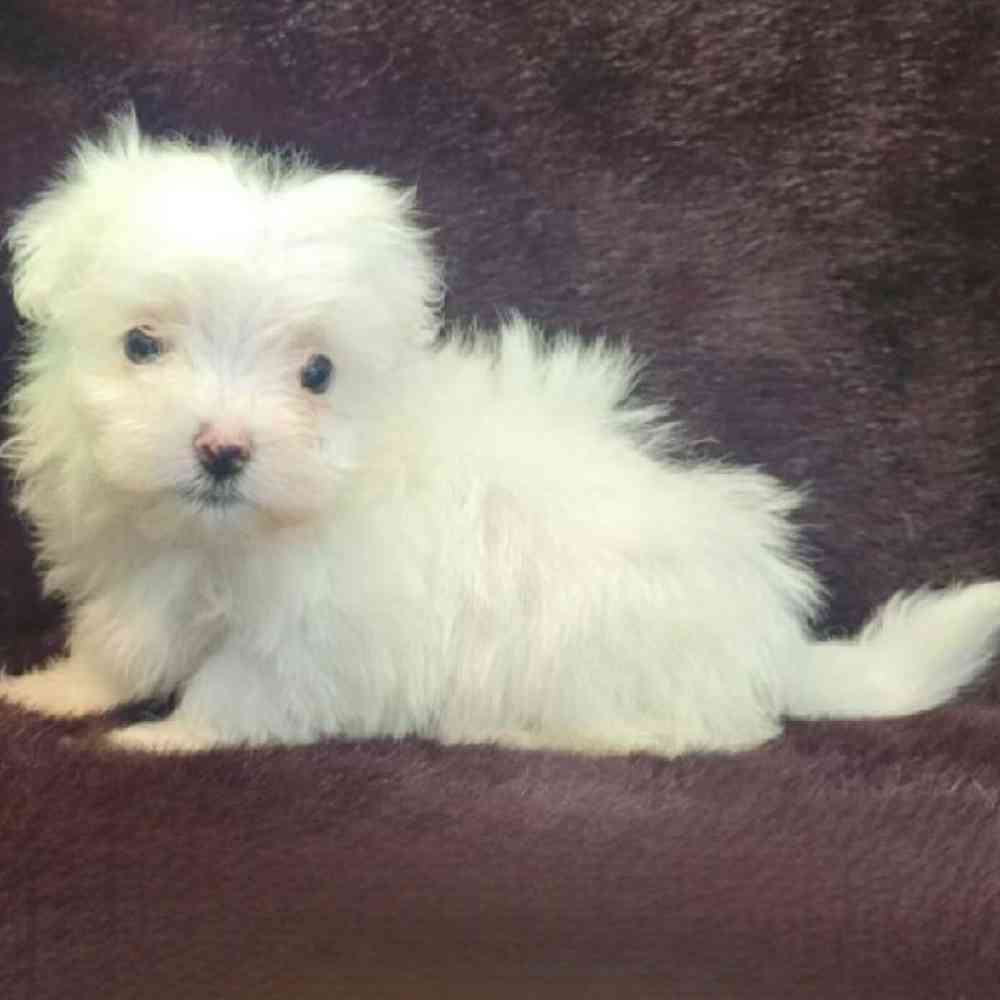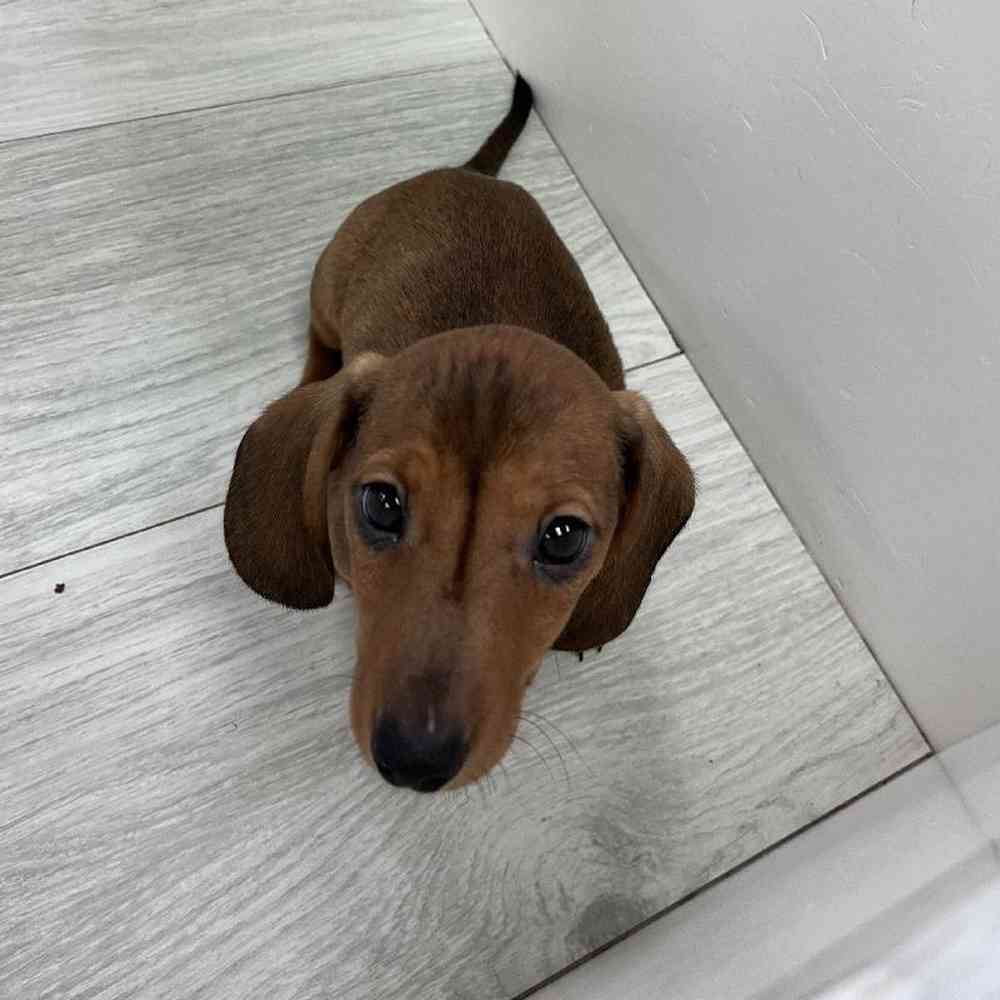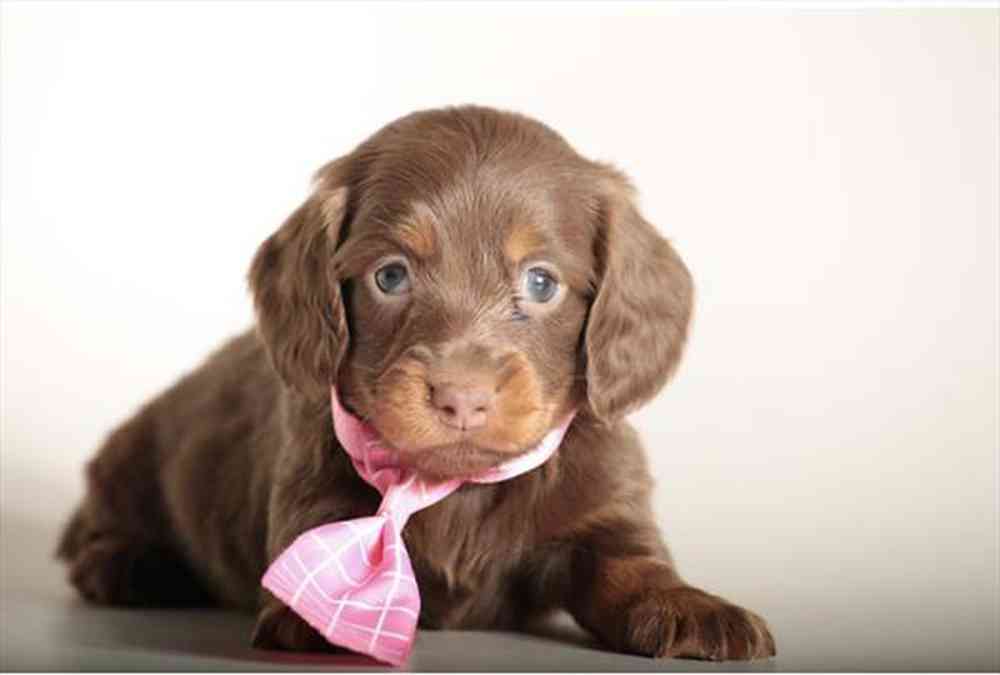
Family Dog
Hypo Allergenic
AKC Registrable
Apartment Friendly
Soft Coated Wheaten Terrier
The Soft Coated Wheaten Terrier, an exuberant Irish farm dog, is happy, friendly, deeply devoted, and just stubborn enough to remind you he’s a terrier. The unique wheaten coat is low-shedding but needs diligent care to avoid matting. Puppies for sale in Long Island, New York.
Available Puppies
Puppy Knowledge
Breed Standard
General Appearance
The Soft Coated Wheaten Terrier is a medium-sized, hardy, well balanced sporting terrier, square in outline. He is distinguished by his soft, silky, gently waving coat of warm wheaten color and his particularly steady disposition. The breed requires moderation both in structure and presentation, and any exaggerations are to be shunned. He should present the overall appearance of an alert and happy animal, graceful, strong and well coordinated.
Size, Proportion, Substance
A dog shall be 18 to 19 inches at the withers, the ideal being 18½. A bitch shall be 17 to 18 inches at the withers, the ideal being 17½. Major Faults - Dogs under 18 inches or over 19 inches; bitches under 17 inches or over 18 inches. Any deviation must be penalized according to the degree of its severity. Square in outline. Hardy, well balanced. Dogs should weigh 35 to 40 pounds; bitches 30 to 35 pounds.
Head
Well balanced and in proportion to the body. Rectangular in appearance; moderately long. Powerful with no suggestion of coarseness. Eyes dark reddish brown or brown, medium in size, slightly almond shaped and set fairly wide apart. Eye rims black. Major Fault - Anything approaching a yellow eye. Ears small to medium in size, breaking level with the skull and dropping slightly forward, the inside edge of the ear lying next to the cheek and pointing to the ground rather than to the eye. A hound ear or a high-breaking ear is not typical and should be severely penalized. Skull flat and clean between ears. Cheekbones not prominent. Defined stop. Muzzle powerful and strong, well filled below the eyes. No suggestion of snipiness. Skull and foreface of equal length. Nose black and large for size of dog. Major Fault - Any nose color other than solid black. Lips tight and black. Teeth large, clean and white; scissors or level bite. Major Fault - Undershot or overshot.
Neck, Topline, Body
Neck medium in length, clean and strong, not throaty. Carried proudly, it gradually widens, blending smoothly into the body. Back strong and level. Body compact; relatively short coupled. Chest is deep. Ribs are well sprung but without roundness. Tail is set on high. Docked tail preferred. Whether docked or natural, the tail is to be carried upright 90 degrees from the back, either straight or with a slight curve forward. Any deviation from this ideal is to be penalized accordingly.
Forequarters
Shoulders well laid back, clean and smooth; well knit. Forelegs straight and well boned. All dewclaws should be removed. Feet are round and compact with good depth of pad. Pads black. Nails dark.
Hindquarters
Hind legs well developed with well bent stifles turning neither in nor out; hocks well let down and parallel to each other. All dewclaws should be removed. The presence of dewclaws on the hind legs should be penalized. Feet are round and compact with good depth of pad. Pads black. Nails dark.
Coat
A distinguishing characteristic of the breed which sets the dog apart from all other terriers. An abundant single coat covering the entire body, legs and head; coat on the latter falls forward to shade the eyes. Texture soft and silky with a gentle wave. In both puppies and adolescents, the mature wavy coat is generally not yet evident. Major Faults - Woolly or harsh, crisp or cottony, frizzy, kinky or standaway coat; in the adult, a straight coat is also objectionable. Presentation - For show purposes, the Wheaten is presented to show a terrier outline, but coat must be of sufficient length to flow when the dog is in motion. The coat must never be clipped or plucked. Sharp contrasts or stylizations must be avoided. Head coat should be blended to present a rectangular outline. Eyes should be indicated but never fully exposed. Ears should be relieved of fringe, but not taken down to the leather. Sufficient coat must be left on skull, cheeks, neck and tail to balance the proper length of body coat. Dogs that are overly trimmed shall be severely penalized.
Color
Any shade of wheaten. Upon close examination, occasional red, white or black guard hairs may be found. However, the overall coloring must be clearly wheaten with no evidence of any other color except on ears and muzzle where blue-gray shading is sometimes present. Major Fault - Any color save wheaten. Puppies and Adolescents - Puppies under a year may carry deeper coloring and occasional black tipping. The adolescent, under two years, is often quite light in color, but must never be white or carry gray other than on ears and muzzle. However, by two years of age, the proper wheaten color should be obvious.
Gait
Gait is free, graceful and lively with good reach in front and strong drive behind. Front and rear feet turn neither in nor out. Dogs who fail to keep their tails erect when moving should be severely penalized.
Temperament
Friendly, Happy, Deeply Devoted
Overview
Group
Terrier
About
The hallmark of these merry extroverts, and what sets them apart from other terriers, is the silky, gently waving coat. It runs from a pale beige to a shimmering gold, recalling the color of ripening wheat. Topping out at 19 inches tall and 40 pounds, Wheatens are square, sturdy terriers with a peek-a-boo hairdo and dashing goatee. The overall picture is that of a hard-muscled but soft-coated working terrier or, as the breed has been described, an iron fist in a velvet glove.
History
Among Ireland’s gifts to civilization are reams of great literature, a mighty smooth whiskey, and three magnificent long-legged terriers: the Wheaten, Kerry Blue, and Irish. All share a common ancestry and were bred for similar purposes. As versatile farm dogs, Wheatens were expected to do any number of rustic chores, like ratting, guarding the chicken coop, and even herding or bird-dogging. When day was done they were engaging fireside companions, a role they still relish—even if the hearth has been replaced by a TV.
Standard
The Soft Coated Wheaten Terrier is a medium-sized, hardy, well balanced sporting terrier, square in outline. He is distinguished by his soft, silky, gently waving coat of warm wheaten color and his particularly steady disposition. The breed requires moderation both in structure and presentation, and any exaggerations are to be shunned. He should present the overall appearance of an alert and happy animal, graceful, strong and well coordinated.
Nutrition
The Soft Coated Wheaten Terrier should do well on a high-quality dog food, whether commercially manufactured or home-prepared with your veterinarian’s supervision and approval. Any diet should be appropriate to the dog’s age (puppy, adult, or senior). Some dogs are prone to getting overweight, so watch your dog’s calorie consumption and weight level. Treats can be an important aid in training, but giving too many can cause obesity. Learn about which human foods are safe for dogs, and which are not. Check with your vet if you have any concerns about your dog’s weight or diet. Clean, fresh water should be available at all times.
Grooming
The Wheaten’s soft, silky coat requires a fair amount of maintenance. The daily grooming session starts with a thorough going-over with a pin brush or a slicker brush to remove dirt and loose hair. Next comes a thorough combing with a medium- and fine-toothed metal comb. Any mats that are found should be pulled apart with the brush, comb, and fingers—never with scissors. As with all breeds, the nails should be trimmed regularly, as overly long nails can be painful to the dog and cause problems walking and running.
Exercise
The Soft Coated Wheaten Terrier has a medium to high energy level that does not diminish, even in old age. They need plenty of exercise every day. With a strong prey drive, Wheatens will have an urge to chase after just about anything that moves, from squirrels to cars, so the backyard or other play area must be securely fenced, and walks must always be on a leash. Wheatens bond to their owners, who should expect to participate in the daily exercise sessions.
Training
Early socialization and puppy training classes are recommended for all dogs to help to ensure that the they grow into well-adjusted, well-mannered companions. The Soft Coated Wheaten Terrier is keenly smart and willful, and often has his own agenda. This makes them challenging to train. It also provides another reason why obedience training should start early, before bad habits become ingrained. A Wheaten needs consistent, firm discipline but is sensitive to harsh treatment. Wheatens must be trained to be compliant without breaking their spirit.
Health
Wheatens are generally healthy dogs, and responsible breeders screen their stock for health conditions such as protein-losing nephropathy, a kidney ailment; protein-losing enteropathy, a term that is applied to several gastrointestinal conditions; Addison’s disease; and renal dysplasia. As with all breeds, a Wheaten’s ears should be checked regularly for signs of infection, and the teeth should be brushed often, using a toothpaste formulated for dogs.







